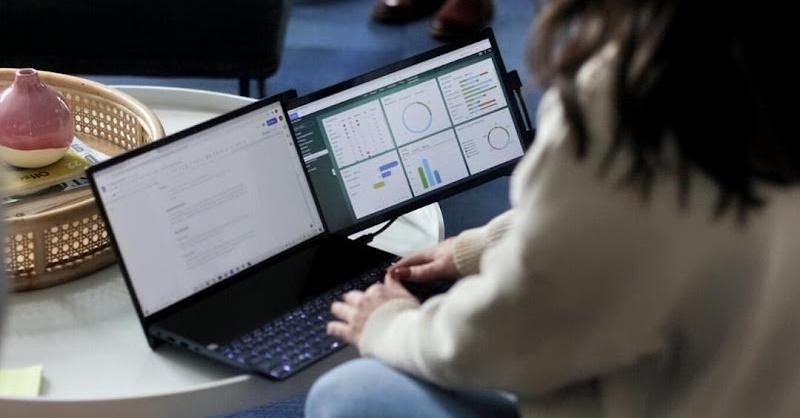As the digital landscape changes, designers are constantly exploring innovative ways to enhance their creative processes and boost productivity. One such tool that has become increasingly popular in design studios and freelance workspaces is the dual monitor setup. From graphic designers to web developers, the dual monitor configuration has proven to be a game-changer, offering a more expansive canvas and streamlined workflow.
Expanding Horizons with Dual Monitors
The most striking advantage of a dual monitor setup is the significant increase in screen real estate. Designers thrive on having ample space to visualize their creations, and dual monitors provide just that. Imagine seamlessly working on a detailed illustration on one screen while having reference materials, inspiration boards, or communication tools open on the other. This expanded canvas not only facilitates a more organized workspace but also enhances the overall creative process.
In the realm of dual monitors, the Duex Plus dual-screen monitor stands out as a noteworthy contender. This portable and versatile monitor is designed to complement existing setups, offering an additional screen that can be easily attached to a laptop. The monitor becomes an extension of the primary screen, allowing designers to extend their workspace wherever they go. With a seamless plug-and-play setup, the tool becomes an instant productivity booster for designers on the move.
Seamless Integration into the Creative Workflow
A dual monitor setup seamlessly integrates into the creative workflow, providing designers with the flexibility to customize their workspace based on the specific demands of each project. Whether it involves comparing design iterations side by side, referencing multiple documents simultaneously, or enhancing collaboration by sharing content on the second screen during virtual meetings, the dual monitor setup adds a layer of adaptability to the design process.
Streamlining Workflows and Multitasking
One of the primary reasons designers opt for dual monitor setups is the ability to streamline workflows and enhance multitasking capabilities. Design projects often involve juggling multiple tasks simultaneously, from sketching concepts to refining details in design software. With dual monitors, designers can allocate specific tasks to each screen, reducing the need to constantly switch between tabs or applications.
For instance, a graphic designer can have Adobe Illustrator open on one screen for detailed vector work while keeping design reference images or client feedback on the other. Web developers can code on one screen and preview the changes in real-time on the second screen. This multitasking approach contributes to a more efficient and focused design process.
Enhancing Collaboration and Communication
In collaborative design environments, effective communication is crucial. Dual monitor setups contribute to improved collaboration by allowing designers to share content on one screen while actively working on the other. This feature becomes particularly valuable during virtual meetings or design reviews where visual communication plays a crucial role.
The ability to share designs and ideas seamlessly fosters a more dynamic and interactive collaboration process, leading to better design outcomes. Dual monitor setups provide a platform for designers to showcase their work, receive feedback, and make real-time adjustments, ultimately enhancing the collaborative nature of creative endeavors.
Considerations for Optimal Dual Monitor Usage
While the benefits of dual monitor setups are evident, there are considerations to keep in mind for optimal usage. Designers should ensure that both monitors are calibrated for color accuracy to maintain consistency in their work. It’s also essential to have a graphics card capable of supporting dual monitors to avoid performance issues.
Additionally, ergonomic considerations play a vital role in creating a comfortable and productive workspace. The positioning of the monitors, the height of the screens, and the arrangement of tools should be thoughtfully planned to reduce strain and fatigue during extended work sessions.
Elevating the Designer’s Experience
The designer’s perspective on using a dual monitor setup reveals a transformative approach to creative work. The expanded screen real estate, seamless integration into the creative workflow, enhanced multitasking, and improved collaboration all contribute to a more efficient and enjoyable design process. As technology continues to evolve, dual monitor setups are likely to remain a staple in the toolkit of designers seeking to elevate their creative experiences and push the boundaries of what’s possible in the digital realm.
